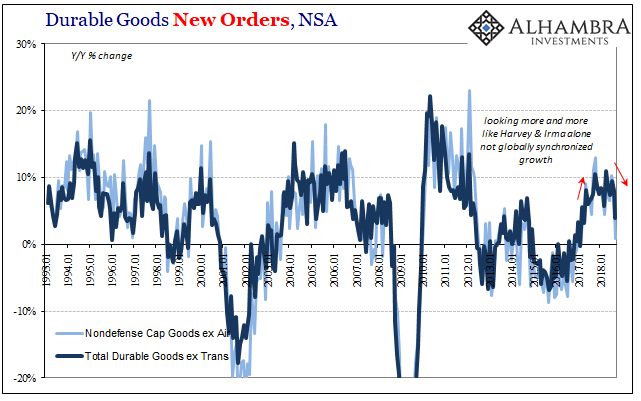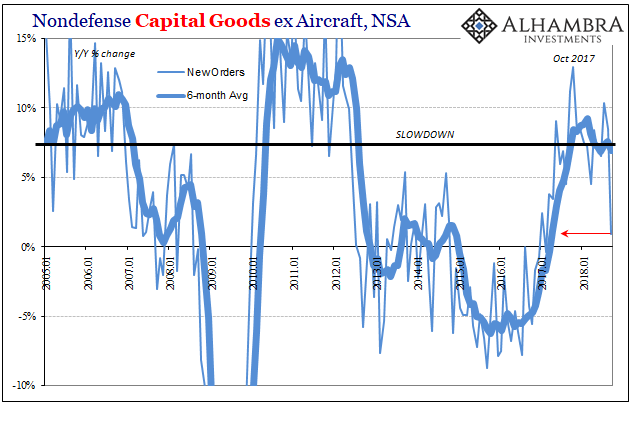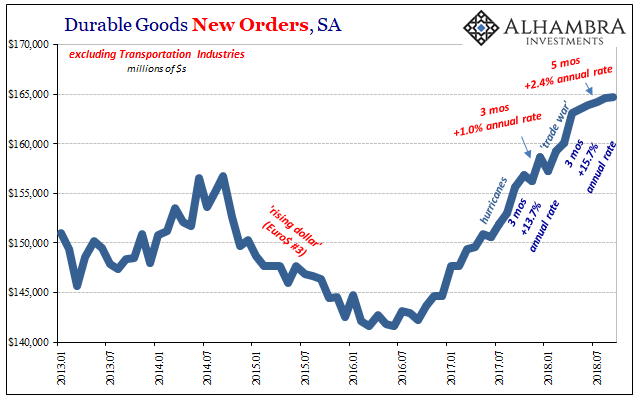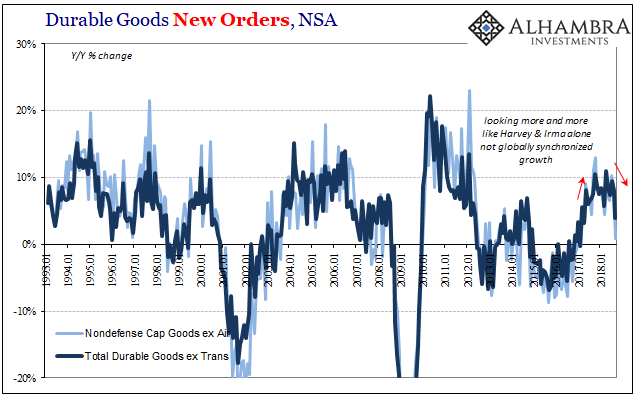The manufacturing renaissance at the base of this supposed US economic is disappearing. It is unsurprising, quite predictable actually. First, there was the cleanup from last year’s major storms and then frontrunning potential trade restrictions. Manufacturers domestically were gearing up for a whole host of non-economic reasons. If Keynes had ever been right about activity for the sake of activity, it would have shown up here.
Instead, after twelve months of favorable comparisons economic accounts are once more coming back down to the pitiful baseline economic state. The latest is durable goods. In September 2018, according to the Census Bureau, new orders for long-lasting goods rose just 3.9% (unadjusted) year-over-year, the lowest gain since April 2017. Over the twelve months prior to September new orders had averaged more than 8% growth.
In terms of capital goods, this reversion to form is even more dramatic. New orders for capital goods had likewise averaged more than 8% from September 2017 to August 2018. Last month, however, orders were nearly unchanged, rising by just 0.9%.


What matters most is the more recent results. For those, we turn to the seasonally adjusted series. Manufacturing activity in this segment appears robust but only in those discrete periods – the three months after Harvey and then for three months leading up to the trade war stuff.

In the five months since, however, durable goods orders are growing at a pitiful 2.4% rate. At such a low level, it’s now difficult to distinguish between coming back down to the prior trend and the possible condition of rolling over into the next downturn.
This analysis is complicated further by that second three-month period in early 2018 when activity was almost certainly pulled forward ahead of trade restrictions. Therefore, we are left wondering what that 2.4% annual rate really suggests, and it could be a combination of all three: demand pulled forward, a sluggish economy underneath all-the-while, and that weakness contributing to the same possible economic rollover already appearing elsewhere around the world.









Leave A Comment